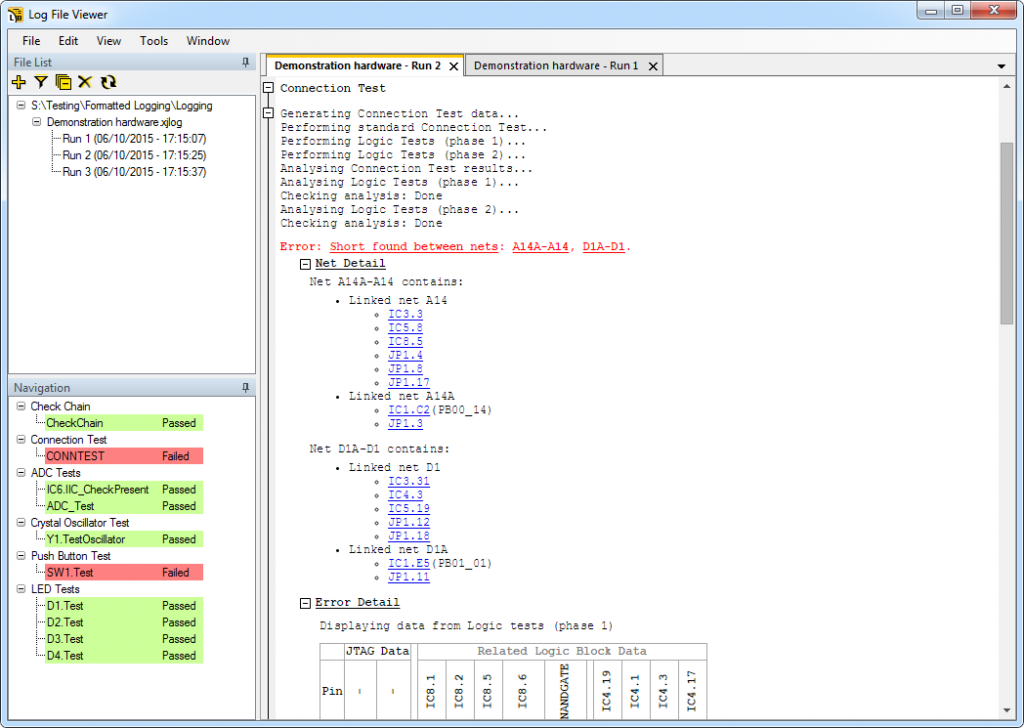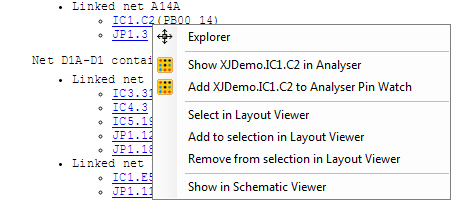It is now possible to produce log files which save the test output to be displayed at a later time in the same way as it is displayed on the Run Tests screen. When these formatted log files are viewed, they contain the tables, expandable sections and hyperlinks as are displayed in the test output on the Run Tests screen. Hyperlinks can be clicked in the log files to view circuit elements in the various viewers that are available.
The option to produce formatted log files is found on the Log File tab on the XJRunner Setup screen in XJDeveloper. It is still also possible to select an option to generate log files in the standard plain text format, and both types of log files can be generated at the same time.
Formatted log files are saved with the file extension .xjlog, and are opened using the XJTAG Log File Viewer. It is possible to open log files directly from Windows Explorer, which launches the Log File Viewer.
The Log File Viewer is also available from within XJRunner, XJInvestigator and XJDeveloper and is opened from an option on the Tools menu. When the standalone Log File Viewer application is used or when it is opened from within XJRunner, it is possible to view circuit elements which are hyperlinked in the log file using Schematic Viewer and Layout Viewer. When the Log File Viewer is opened from within either XJInvestigator or XJDeveloper, there are the added options to view circuit elements which are hyperlinked using Explorer and Analyser.
Tamper detection is built into formatted log files. When a log file is manually edited after it has been generated, a warning will be shown when the log file is opened. This ensures data integrity when analysing log files for boards tested on the factory floor.



Leave A Comment